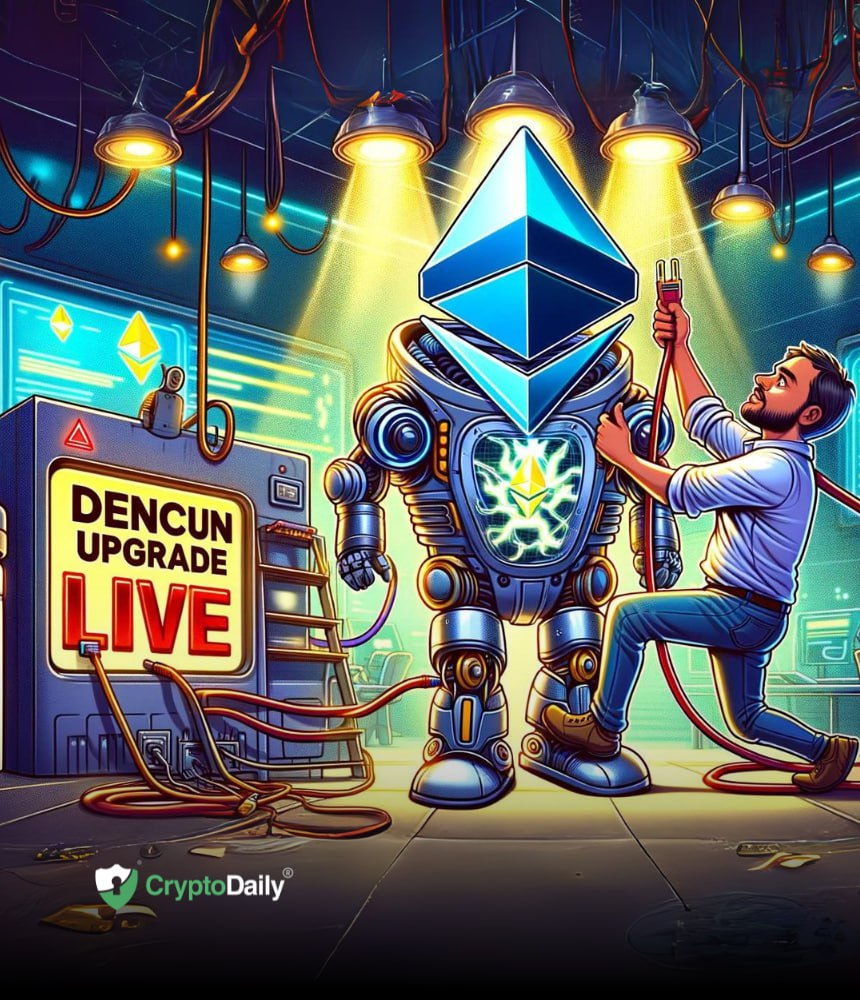Ethereum’s highly anticipated Dencun upgrade was released to mainnet at the start of epoch 269568 at 9:55 AM ET on Wednesday for those following it on-chain.
According to the developers, the upgrade will reduce Layer 2 transaction costs to the point where gas fees become obsolete.
Dencun Live Broadcast
In addition to lowering transaction costs across the Ethereum Layer-2 network, the Dencun upgrade significantly expands the functionality of the blockchain ecosystem. After the upgrade is implemented, it will be integrated into the Layer 2 network-wide settlement agreement, a process that will take several months. According to one Ethereum developer, once integrated, gas fees on the Layer-2 network should immediately drop by 75%.
Ethereum developers held a live stream for several hours ahead of the upgrade, discussing various Ethereum Improvement Proposals (EIPs) that will be released with Dencun. They also explained some new technologies and terminology related to Dencun, especially blobs, a new way to organize and transmit data over the Ethereum network.
Upgrade Details
Dencun is a scalability-focused upgrade that includes EIP-4844, also known as Proto-Danksharding. Proto-Danksharding creates a dedicated Layer-2 data channel on Ethereum, significantly reducing transaction fees when rolled up. The upgrade brings a total of 9 EIPs, making it the largest single fork in terms of number of improvements released. After the upgrade, most users will start enjoying the benefits within a few hours or days, as the data chunks introduced by EIP-4844 significantly reduce transaction fees. According to Hannes Graah, developer of cryptocurrency wallet Zeal, these real-world benefits are raising high expectations for the upgrade.
“The Dencun upgrade brings us closer to a future where fees are an afterthought rather than a deal breaker. Just as we don’t typically have to worry about the costs of traditional domestic bank transfers, Web3 users should be able to transact without worrying about fees.”
main reaction
Aki Balogh, co-founder and CEO of DLC.Link, compared EIP-4844 to the NoSQL movement of 2010, which removed the constraints of structured SQL data through developments such as MongoDB.
“Giving developers large chunks of temporary data (deleted after 30 days) gives them the opportunity to innovate without increasing network load. Similar to Mongo’s effect, this proposal will help innovate as dApps and chains find new ways to use ephemeral storage.”
Philippe Schommers, head of infrastructure at Gnosis, said that unlike Web2’s expansion, the new data storage channel does not compromise decentralization. Gnosis already implemented the Dencun upgrade on Monday.
“When working on blockchain scalability solutions, there is a choice developers must make to prioritize decentralization. “If you look at the Web2 infrastructure, it’s easy to see how centralized scaling can happen, but that’s not the path we want to follow.”
Network Override Upgrade
Ethereum has gone through several upgrades, including a very significant 2022 merge that saw the network transition from an energy-intensive proof-of-work consensus mechanism to an energy-efficient proof-of-stake consensus mechanism. Another notable upgrade was the Ethereum Shanghai upgrade, which unlocked tens of billions of dollars worth of ETH staked on the network.
However, developers believe the Dencun upgrade will transform the network on a level never seen before. Dencun is a much bigger upgrade than Shanghai, according to core developer Marius Van Der Wijden.
“We believe this upgrade will have the biggest impact on users of all Ethereum upgrades to date. Dencun is a much bigger update than Shanghai.”
According to David Silverman, Vice President of Product and Polygon Labs, Dencun takes Ethereum from a rural back road to a four-lane highway in terms of efficiency.
Disclaimer: This article is provided for informational purposes only. It is not provided or intended to be used as legal, tax, investment, financial or other advice.

